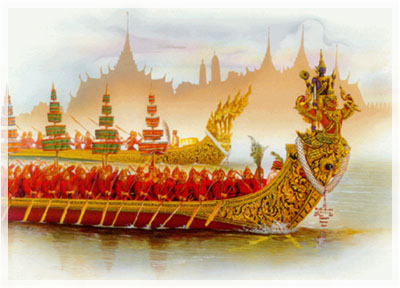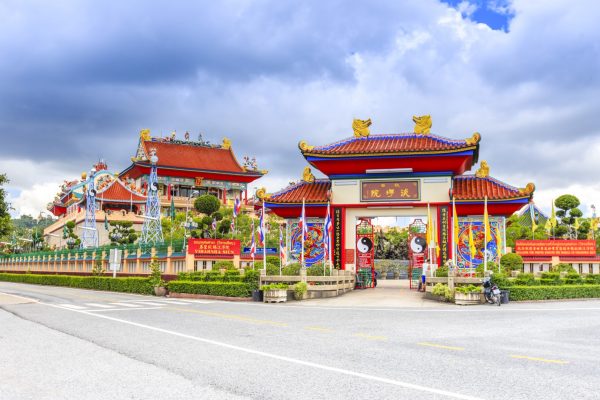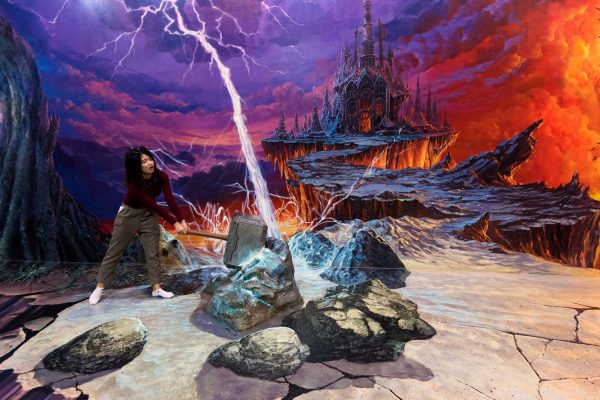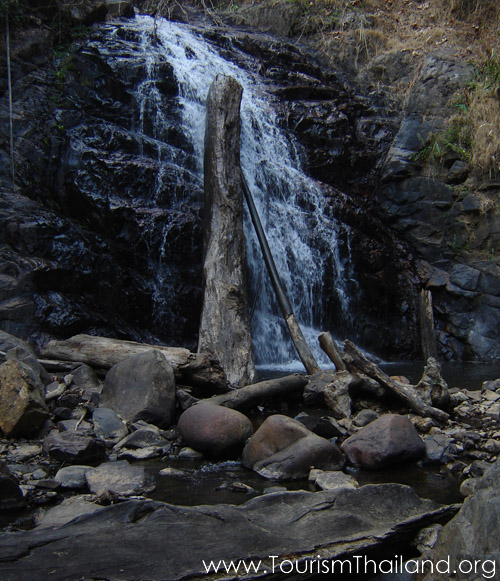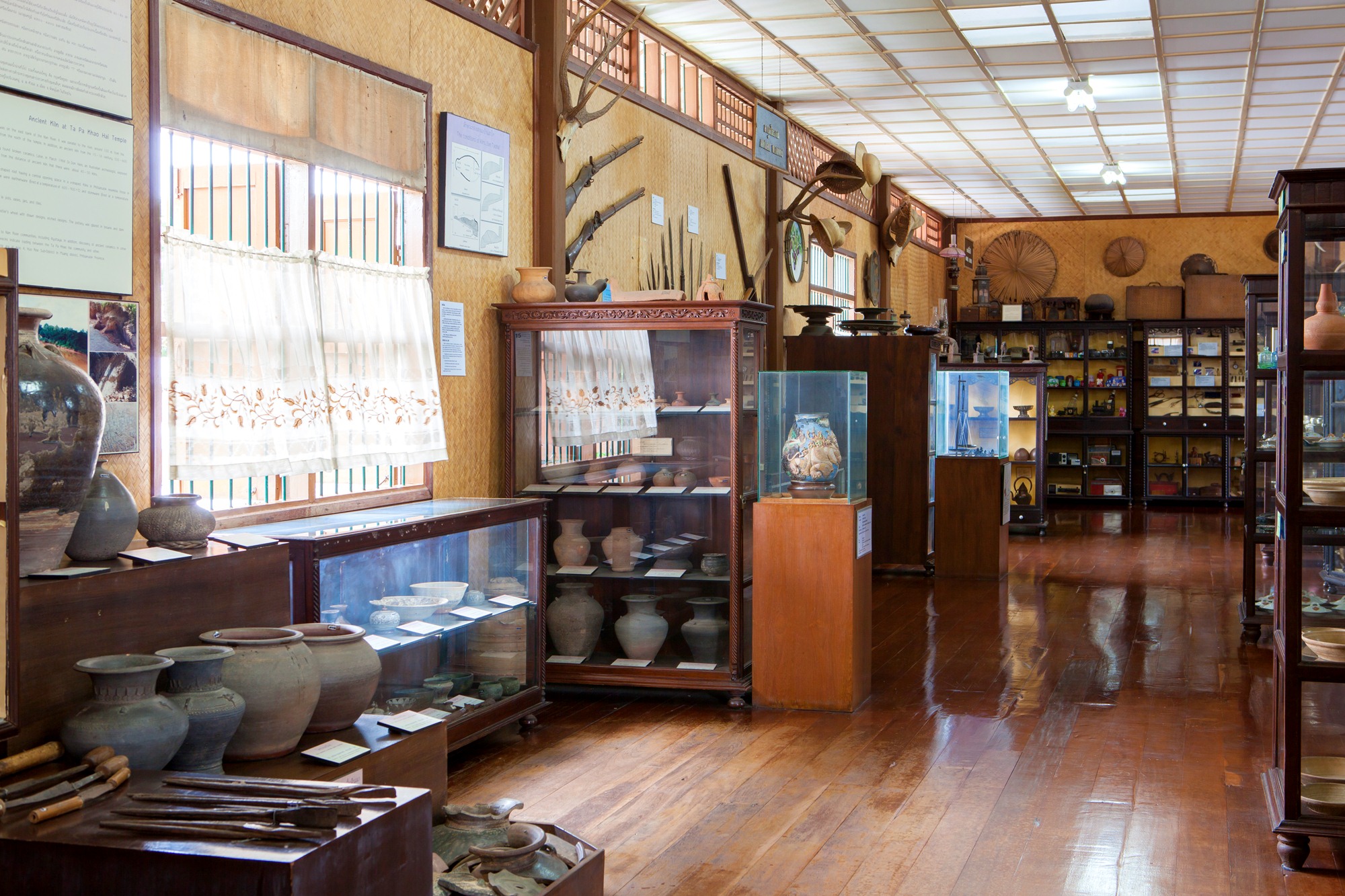
Sgt. Maj. Thawee Folk Museum
Sgt. Maj. Thawee Folk museum (Sgt. Maj. Thawee-Pim Buranaket)Uncle Sergeant or whom local people call Sergeant Thawee is Sgt. Maj. Thawee Buranaket, a good person of Song Kwai, Phitsanulok. He collected folk utensils in the past to be Thailand’s heritage and a lifetime learning center of descendants and the community. The museum inherits cultural, traditional, and lifestyle heritage and has become worthy Sgt. Maj. Thawee Folk Museum until now.You can experience all parts of the museum through the path among nature. The front entrance has a pavilion for relaxation. In the pavilion, there are exhibitions of art and folk handicraft. The encircled area is decorated with climbing plants. You will feel the shadow and relaxation.The first building is the wooden house that the original owner built after the burning of Muang Phitsanulok Market in 1957. Uncle Sergeant bought this house and stored his collections here. This house is the first museum’s building. In 1990, other buildings were built and collections were moved to exhibit in the big building. This house exhibits old pictures of local Phitsanulok’s history such as going on a tour of inspection in the past, burning incident in 1957, Phitsanulok’s landscape before and after the big burning, charms of Phitsanulok, and important communities in the past including Nakorn Thai Community or Nakorn Thai District nowadays which has interesting traditions such as Pak Tong Chai ceremony and Len Nangkong Nangdong Nangkway ceremony.Moreover, there is the exhibition of Bang Ragam District history. The original place of famous local dog breed named “Bangkaew” and also the exhibitions of other districts, Lueng Hang Kao Cocks, and Chao Liang Cocks or what people believe to be the gamecock of King Naraesuan.The second building is a two-storey wooden building in contemporary style. It was built about 50 years ago. This building exhibits folk utensils in the past from every region of Thailand, especially provinces in the southern part of the northern region such as Phitsanulok, Pijit, Nakhon Sawan, Kampaengphet, Phetchaboon, Tak, Sukhothai, and Utaradit. The utensils are divided according to the usage. The first floor exhibits coconut graters, basketworks, lacquer wares, water jars, animal catching equipment, fish catching equipment, coins and banknotes, clothes, and rice planting.Some parts of the museum imitate various parts of traditional Thai house such as Krua Fai and Palai, a porch that used as a multi-purposed area. In Palai area, there is a model of a baby lying in a cradle and a sound of baby lullaby songs. The second storey exhibits toys, musical instrument, massage sticks, tents for remaining by a fire after parturition, craftsmen’s tools, weapons, brasses, and ancient lamps. The third building has the exhibition about Song or Laosong or Thaisongdam people; the case study of Song people in Baan Laem Makha, Phan Sao Sub-District, Bang Ragam District, Phitsanulok who emigrated from Lopburi and Ratchaburi for generations. In Phitsanulok, Song people live in Bang Ragam District, Muang District, and Wang Thong District. The exhibition shows Song people’s lifestyle and ceremonies such as Sen Ruan (take care of ancester’s spirits), Sen A Nee (exorcise when family member pass away), and Ngaan Gin Long or Gin Fong (Song people’s wedding ceremony).This folk museum is opened daily except on Monday from 8.30 a.m. to 4.30 p.m. For more information, please contact 0-5521-2749 or 0-5530-1668 fax. 0-5521-1496. Admission fee: 50 baht for Thai adults, 20 baht for Thai children, and 100 baht for foreigners. The opposite side of the museum is Buranathai Buddha Statue Foundry. Contact 0-5525-8715 before arrival to see Buddha statue founding.

